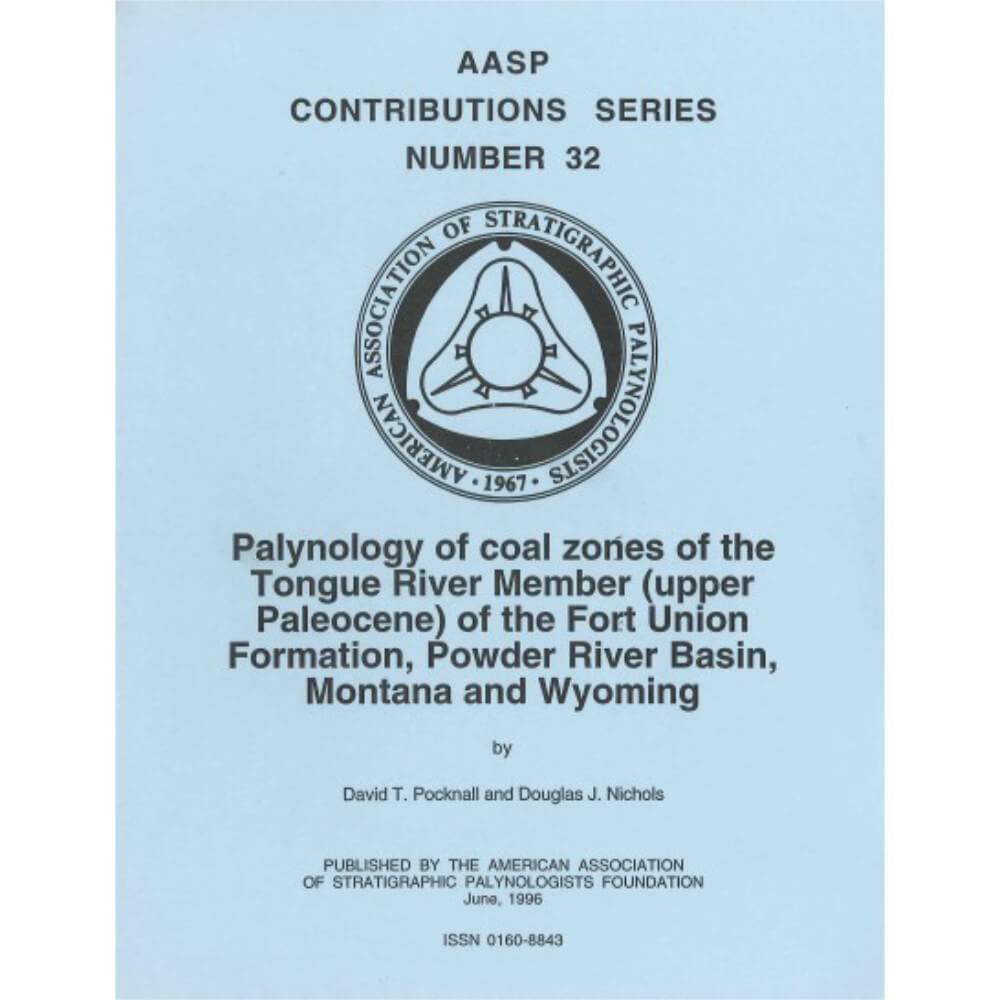Contributions Series Nr. 32
$8.00 – $10.00
Palynology of coal zones of the Tongue River Member (upper Palaeocene) of the Fort Union Formation, Powder River Basin, Montana and Wyoming
David T. Pocknall & Douglas J. Nichols
1996
PDF & Hardcopy available
69 pp.
Description
Abstract
Palynological analyses were conducted on coals and associated carbonaceous shales from the Tongue River Member (upper Paleocene) of the Fort Union Formation in the Powder River Basin, Montana and Wyoming. Samples were from cores and outcrop sections. The sampled interval includes channel-dominated and lake-dominated facies of the Tongue River Member in the interval from the Sawyer to the Smith coal beds. Taxonomic analyses reported here are the basis of previously published biostratigraphic and paleoecologic studies.
Sixty-six palynomorph taxa are discussed and illustrated. These include pteridophyte spores (seven species of trilete isospores, two of monolete isospores, and one megaspore species), inaperturate and bisaccate pollen (treated as two separate suprageneric taxa), rimulate pollen (one species), monosulcate pollen of gymnospermous or angiospermous affinity (four species), and forty-eight taxa of angiosperm pollen. Ten taxa are described as new and six new combinations are proposed. The new taxa are Aesculipollis n. gen., A. wyomingensis n. sp., Echitricolpites supraechinatus n. sp., Caprifoliipites paleocenicus n. sp., Liliacidites crassiterminatus n. sp., Retitrescolpites catenatus n. sp., Rousea crassimurina n. sp., R. linguiflumena n. sp., Siltaria hanleyi n. sp., and Talisiipites pulvifluminus n. sp.
The interval studied is within the previously defined Aquilapollenites spinulosus Zone and Caryapollenites Assemblage Zone. The palynoflora is dominated by inaperturate pollen representing extinct species of taxodiaceous, cupressaceous, or taxaceous affinity; accordingly, percentage abundance data are presented in two formats: one including all taxa studied and the other based on a “pollen sum” that excludes inaperturate pollen. (The concept and term “pollen sum” are borrowed from Quaternary palynology. We modified the concept by including spores but retained the well established term.) Bisaccate gymnosperm pollen is less abundant but was present in every sample examined. Among angiosperms, the most commonly occurring species belong to the genera Caryapollenites, Momipites, Tricolpites, Triporopollenites, and Ulmipollenites. These genera have certain or probable affinity with the modem families Juglandaceae (Caryapollenites and Momipites), Platanaceae (Tricolpites), Betulaceae (Triporopollenites), and Ulmaceae (Ulmipollenites). Pollen of juglandaceous species is especially common throughout, and an increase in the ratio of pollen of the juglandaceous genera Caryapollenites to Momipites is evident toward the top of the section.
Some fossil pollen described in this study may constitute the stratigraphically oldest palynological records of the modem families Hippocastanaceae and Eucommiaceae, the oldest North American record of Alnipollenites scoticus (Betulaceae), and the first upper Paleocene record of Dyadonapites reticulatus (Sparganiaceae?). In addition to taxa previously known from the lower Tertiary, species of the more characteristically Cretaceous genera Aquilapollenites, Corollina, and possibly Proteacidites apparently are indigenous to the Tongue River Member.
